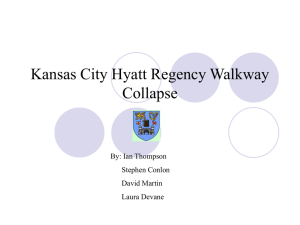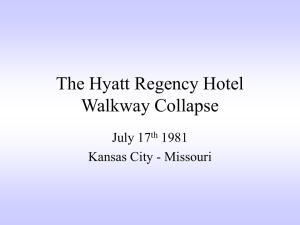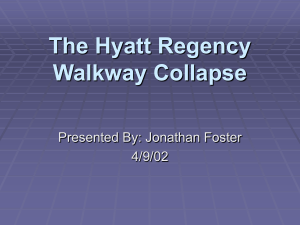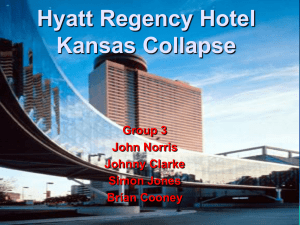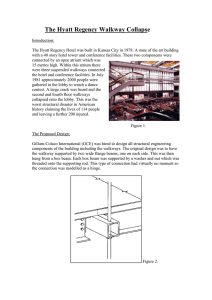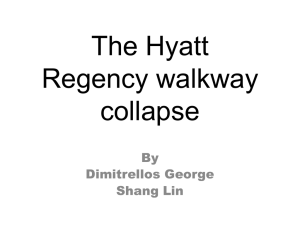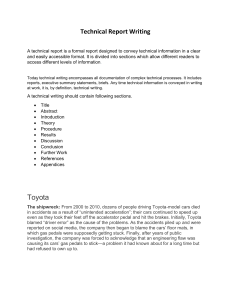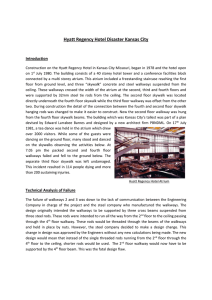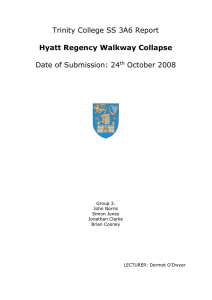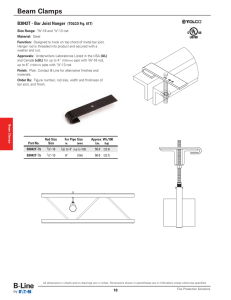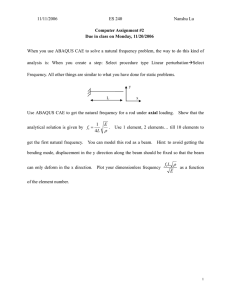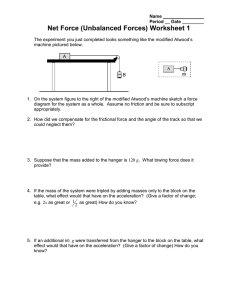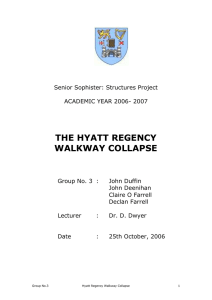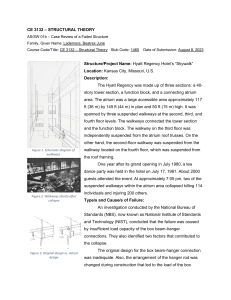The Hyatt Regency Walkway Collapse.ppt
advertisement
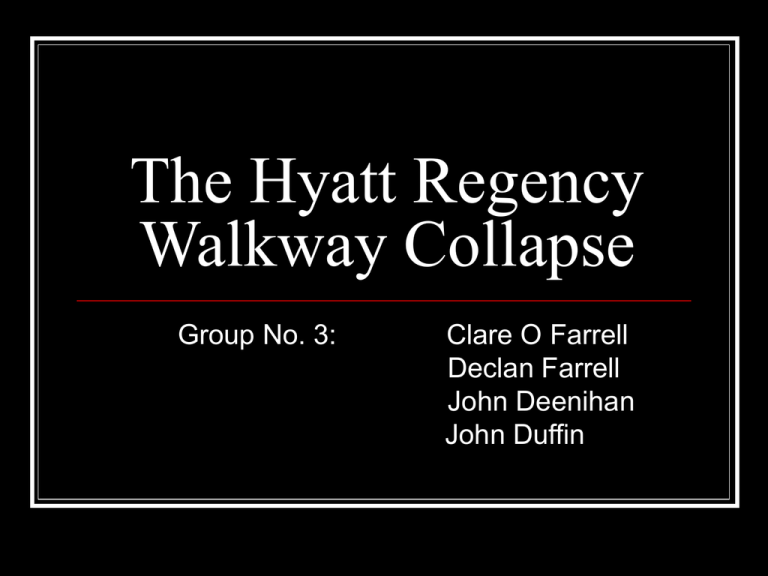
The Hyatt Regency Walkway Collapse Group No. 3: Clare O Farrell Declan Farrell John Deenihan John Duffin Introduction: Hotel opened July 1980 3 connecting structures 40 story tower Function block 3 x 37m skywalks spanning an atrium 3rd and 4th floor walkways suspended independently from roof 2nd floor bridge suspended from 4th floor bridge via system of 32mm steel hanger rods Proposed Design: 2nd floor was originally designed to be suspended from 4th floor via single rod Rod threaded through welded box beam supported by a washer and nut However, proposed design not implemented Actual Design: Original design impractical Contractors amended design to double hanger rod connection 4th floor box beam now had to support load of two walkways 3rd floor walkway kept to original spec. Failure: Friday evening 17th July 1981, over 1,600 people attended a tea dance in the atrium All 3 walkways were crowded with people dancing The weight and vibration caused the 4th floor box beam to split at the welds and hanger rods were ripped through Resulted in both the 2nd and 4th floor walkways collapsing, killing 114 people, injuring over 200 intact hanger rods from 4th floor walkway opening Close-up of one of the 4th floor beams Responsibilities: Walkways collapsed under less load than specified building code Box beam connections did not meet code Fault found to be with the structural engineers – no recalculations for revised design, thus constructed walkway was both uncertified and illegal Engineering licences lost Conclusions: Engineers have a responsibility to public and clients for both construction and service life of a structure All aspects of design must achieve a standard of adequate safety and reliability, no compromise may be made Major neglect on part of engineering firm involved
